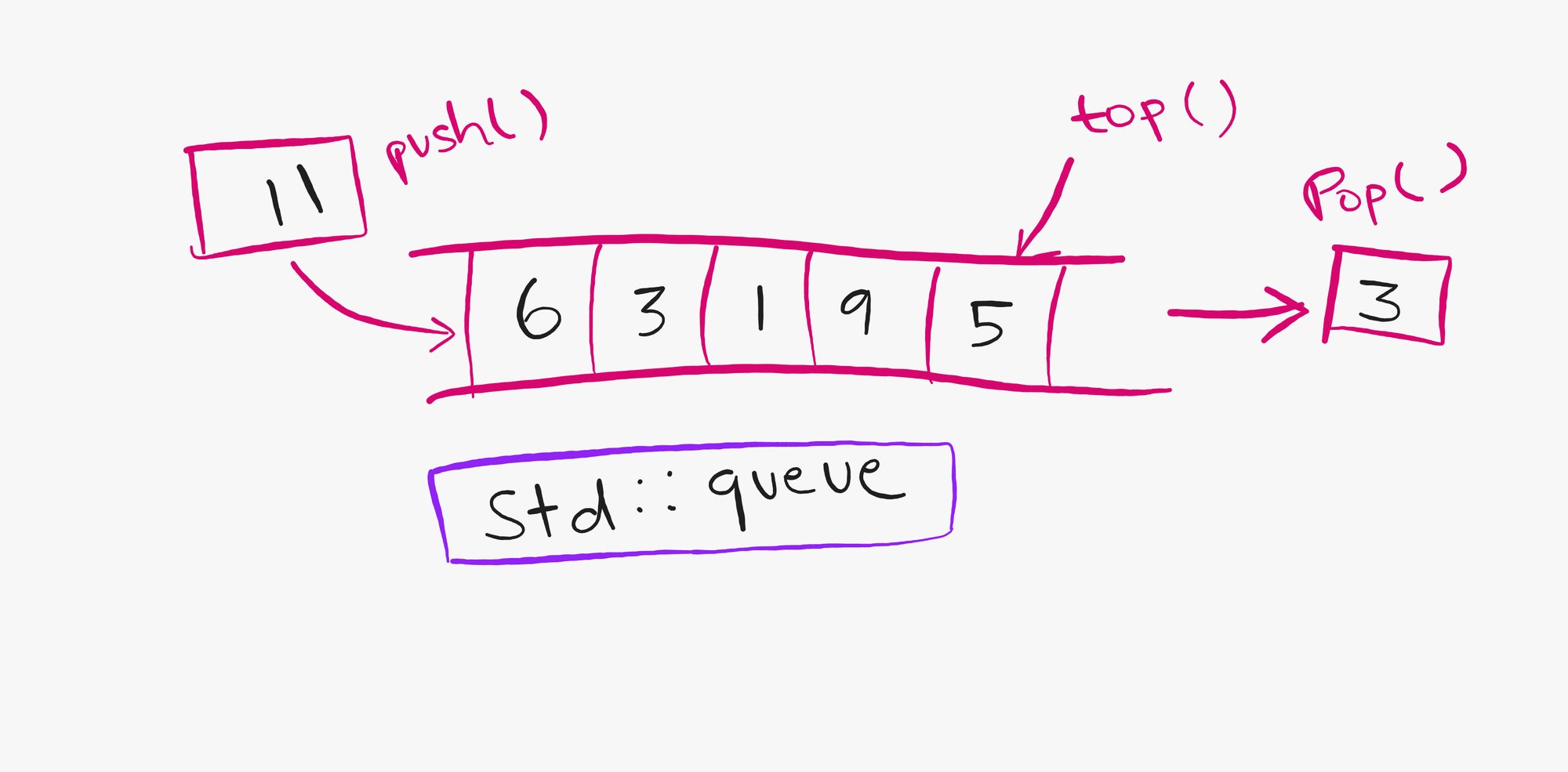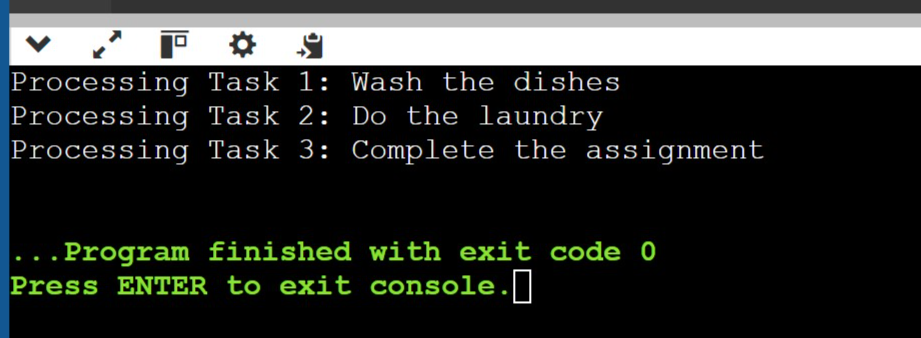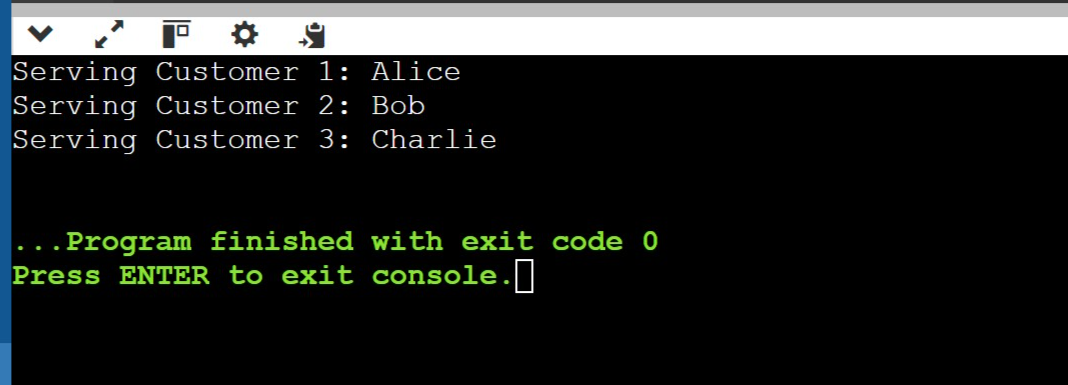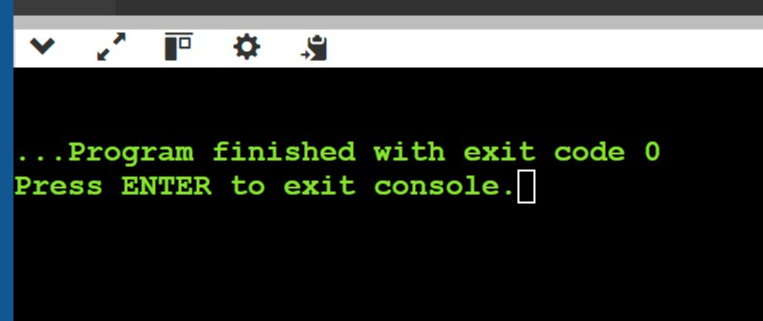std::queue in C++
A queue is a First-In-First-Out (FIFO) data structure, which means the first element added is the first one to be removed.

Introduction to std::queue
C++ is a versatile and powerful programming language widely used in various software development fields. One of its key features is the Standard Template Library (STL), which provides a range of useful data structures, including std::queue. A queue is a First-In-First-Out (FIFO) data structure, which means the first element added is the first one to be removed.
What is std::queue?
std::queue is a container adapter that provides the functionality of a queue, with its elements arranged in a FIFO order. It is part of the C++ Standard Library and is useful for managing collections of elements where the first element added should be the first one to be removed.
Key Features of std::queue
- FIFO Structure: First-In-First-Out order of elements.
- Basic Operations: Supports essential queue operations like push, pop, front, and back.
- Container Adapter: Typically built on top of other containers like
std::dequeorstd::list.
How to Declare and Initialize a std::queue
Here are some basic ways to declare and initialize a queue:
#include <iostream>
#include <queue>
#include <list>
int main() {
std::queue<int> queue1; // Empty queue of integers
std::queue<int, std::deque<int>> queue2; // Queue using deque as underlying container
std::queue<int, std::list<int>> queue3; // Queue using list as underlying container
return 0;
}
Basic Operations on std::queue
Adding Elements
Elements can be added to the queue using the push method:
queue1.push(10); // Adds 10 to the queue
queue1.push(20); // Adds 20 to the queue
queue1.push(30); // Adds 30 to the queue
Accessing the Front and Back Elements
The front method returns the element at the front of the queue, and the back method returns the element at the back:
int frontElement = queue1.front(); // Retrieves the front element (10 in this case)
int backElement = queue1.back(); // Retrieves the back element (30 in this case)
Removing Elements
Elements can be removed from the queue using the pop method:
queue1.pop(); // Removes the front element (10)
int newFrontElement = queue1.front(); // Now the front element is 20
Checking if the Queue is Empty
The empty method checks whether the queue is empty:
bool isEmpty = queue1.empty(); // Returns true if the queue is empty
Getting the Size of the Queue
The size method returns the number of elements in the queue:
size_t queueSize = queue1.size(); // Returns the number of elements in the queue
Real-World Examples of std::queue
Example 1: Task Scheduling
Imagine you are developing a program to manage a list of tasks. You can use std::queue to schedule tasks in the order they are added.
#include <iostream>
#include <queue>
#include <string>
int main() {
std::queue<std::string> tasks;
// Adding tasks
tasks.push("Task 1: Wash the dishes");
tasks.push("Task 2: Do the laundry");
tasks.push("Task 3: Complete the assignment");
// Processing tasks
while (!tasks.empty()) {
std::cout << "Processing " << tasks.front() << std::endl;
tasks.pop();
}
return 0;
}

Run this code : https://www.onlinegdb.com/vjexOWyll
Example 2: Customer Service Queue
You can use std::queue to simulate a customer service queue where customers are served in the order they arrive.
#include <iostream>
#include <queue>
#include <string>
int main() {
std::queue<std::string> customerQueue;
// Adding customers
customerQueue.push("Customer 1: Alice");
customerQueue.push("Customer 2: Bob");
customerQueue.push("Customer 3: Charlie");
// Serving customers
while (!customerQueue.empty()) {
std::cout << "Serving " << customerQueue.front() << std::endl;
customerQueue.pop();
}
return 0;
}

Run this code : https://onlinegdb.com/SLL6ClTo8
Advanced Operations on std::queue
Using a Custom Underlying Container
While std::deque is the default underlying container for std::queue, you can specify other containers like std::list:
#include <deque>
#include <list>
#include <queue>
int main() {
std::queue<int, std::deque<int>> queueDeque; // Queue with deque as underlying container
std::queue<int, std::list<int>> queueList; // Queue with list as underlying container
queueDeque.push(10);
queueDeque.push(20);
queueList.push(30);
queueList.push(40);
return 0;
}

Run this code : https://onlinegdb.com/TETlhH93Y
Transferring Elements Between Queues
You can transfer elements from one queue to another by popping elements from one queue and pushing them onto the other:
std::queue<int> sourceQueue;
std::queue<int> destinationQueue;
sourceQueue.push(1);
sourceQueue.push(2);
sourceQueue.push(3);
while (!sourceQueue.empty()) {
destinationQueue.push(sourceQueue.front());
sourceQueue.pop();
}
Common Pitfalls and Best Practices
Avoid Excessive Memory Usage
Since std::queue is based on an underlying container, be mindful of its memory usage, especially with large data sets. Prefer using containers like std::deque or std::list as the underlying container to minimize memory overhead.
Ensure Proper Exception Handling
When using operations that might throw exceptions (like front or pop on an empty queue), ensure proper exception handling to avoid crashes:
if (!queue1.empty()) {
int frontElement = queue1.front();
} else {
std::cerr << "Error: Attempt to access front element of an empty queue." << std::endl;
}
Choose the Right Underlying Container
Choose the underlying container based on your needs:
- Use
std::dequefor a balanced approach in terms of insertion and access speed. - Use
std::listif you need efficient insertions and deletions at both ends.
Conclusion
std::queue is a powerful and flexible container in C++ that allows you to manage elements in a FIFO order efficiently. By understanding and utilizing the basic and advanced operations of std::queue, you can write more efficient and maintainable C++ programs. Whether you are scheduling tasks, managing a customer service queue, or handling other queue-based operations, std::queue is an invaluable tool in your C++ toolkit.
Summary of Key Points
- FIFO Structure:
std::queuemaintains a First-In-First-Out order. - Basic Operations: Supports push, pop, front, back, empty, and size operations.
- Versatility: Can be built on various underlying containers like
std::dequeandstd::list.
By mastering std::queue, you will enhance your ability to handle queue-based data structures in C++, preparing you for more complex programming challenges. Happy coding!

Discussion